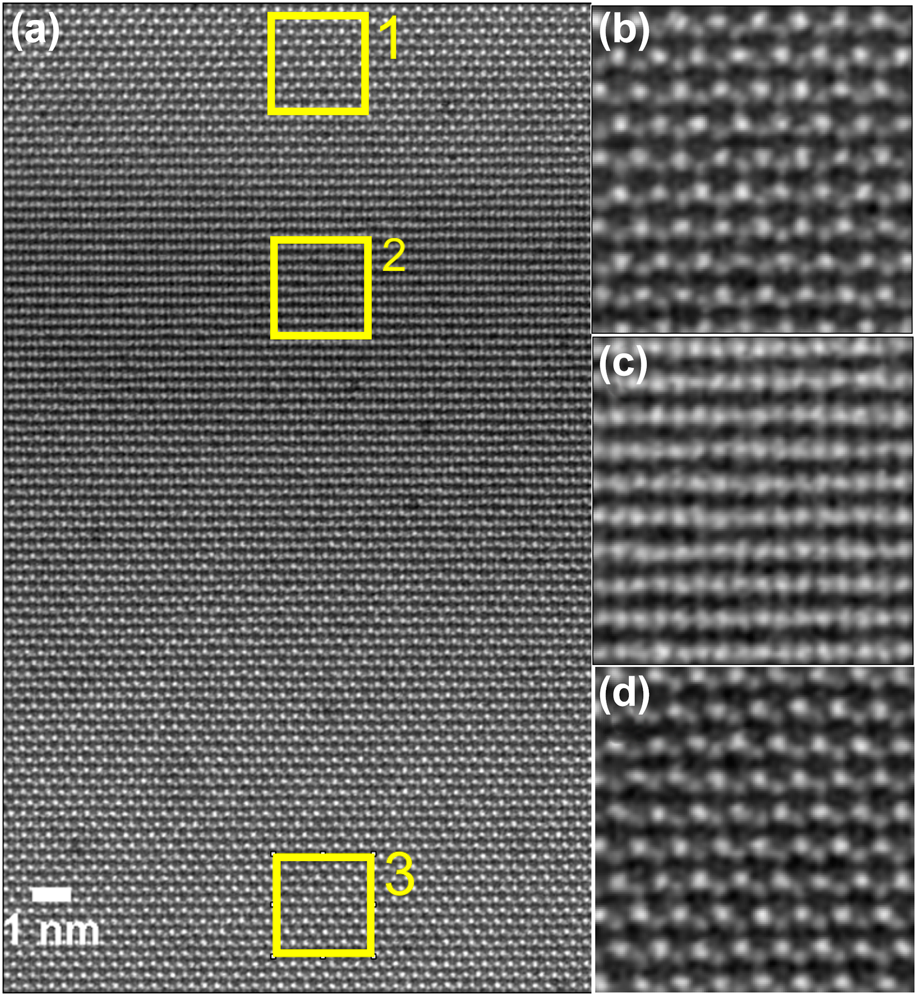No CrossRef data available.
Published online by Cambridge University Press: 13 January 2020

We show interlayer stacking shifts occur in transition metal dichalcogenides (TMD) bilayers due to the strain introduced during sample heating, and attributed to rippling of one layer relative to the other. The atomic structure of the interlayer stacking is studied using annular dark field scanning transmission electron microscopy with an in situ heating holder. Before heating, bilayers show uniform interlayer stacking of AA′ and AB. When heated, contrast change is seen and associated with interlayer stacking changes at the atomic scale due to ripples. When cooled down to room temperature, these contrast features disappear, confirming it is a reversible process that is not related to defects or vacancies. Because the bottom layer is attached to the in situ heating chip made from Si3N4 and the top layer is in contact with the underlying TMD layer with weak van der Waals interaction, the two layers experience different forces during thermal expansion.